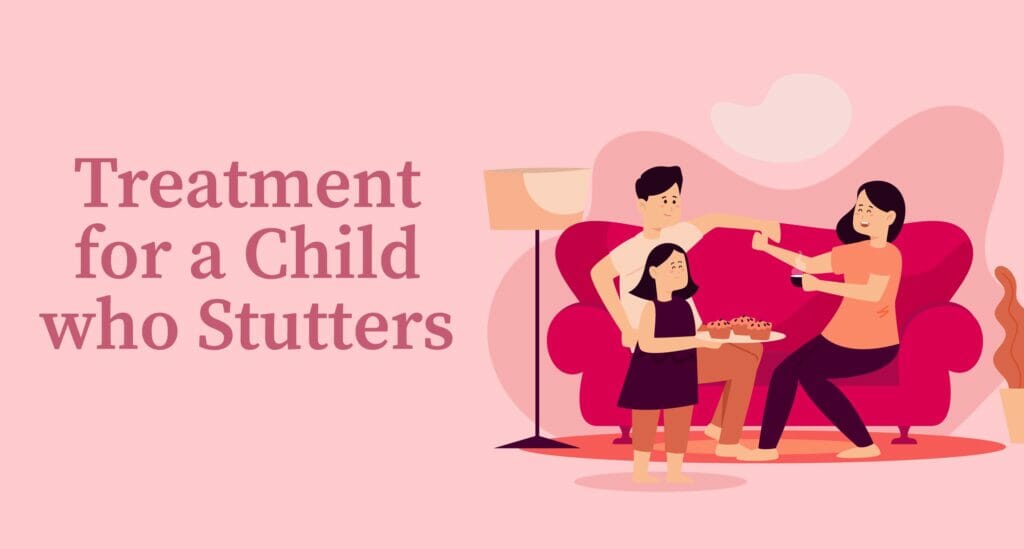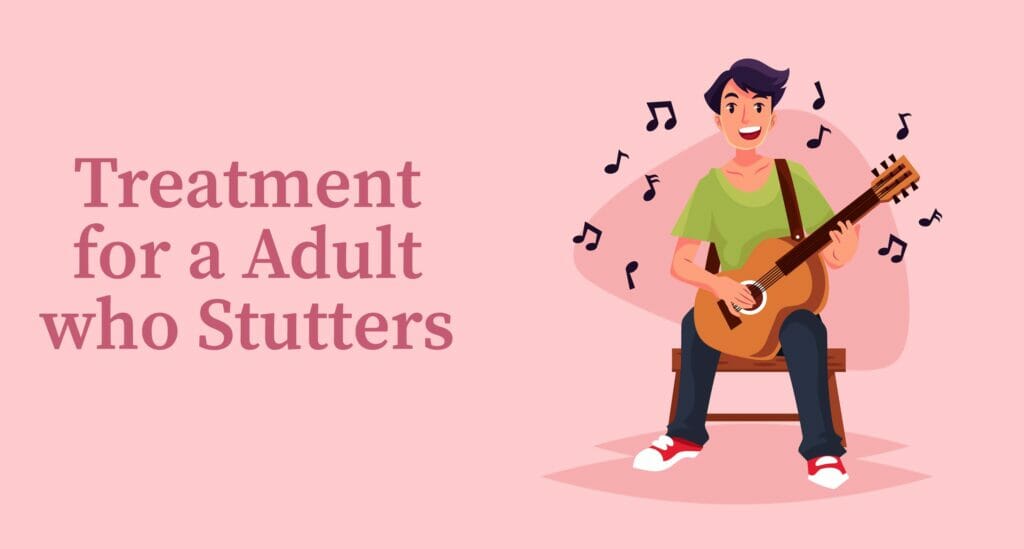Everyone who is trying to come to terms with their stuttering share a common dream – one day they will wake up and speak with complete fluency.
Sadly, that remains a dream for most, especially those who do not have access to speech therapy and counselling. Most individuals talk without any repetitions, blocks and prolongations. However, even the most fluent speaker experiences some dysfluency during their lifetime.
However, a person who stutters severely does so on at least 50% of the words they speak. They tend to stutter more when they are under duress, but stress, fear and anxiety do not precipitate stuttering in children or adults!
So, when someone asks “how to stop stuttering?” there are quite a few factors a speech therapist needs to assess before giving them the right answer. The truth is, the treatment or cure for stuttering not only changes with each age group, but also with every individual depending on their personality, emotions and avoidance behaviours.
What is developmental stuttering?
Developmental stuttering typically begins in children when they are developing their language skills at lightning speed. It is typically between the ages of 2 and 3.5 years. It is a common form of stuttering which depends on multiple factors including genetics, heredity and environment. There are other forms of acquired stuttering that demand different courses of treatment.
Here, we will talk about how to stop developmental stuttering and its treatment in children, adolescents and adults.
Is there a treatment or cure for stuttering?
The treatment of stuttering depends upon the age of the patient, the symptoms exhibited by them and their overall general health. The severity of stuttering dictates the course of treatment and its success. It is too early to conclude that stuttering cannot be cured. Sometimes, the treatments work well enough so that the person is able to speak fluently most of the times with the help of breathing and speaking exercises.
Currently, there are applications like Stamurai that help individuals with stuttering to practice their speech while away from the SLP’s clinic. It is indeed true that not all types of stuttering have a cure, but it is also possible to overcome the fear or anticipation associated with stuttering, which in turn, reduces the frequency of dysfluencies.
The treatment of stuttering is often complicated by –
- Lower self-esteem of the individual
- Poor performance in school/at work
- Poor social and personal relationships
- Limited participation and introverted nature
The SLP can directly work with the client to improve their speech fluency and decrease the impact it has on their work and social life. Adults often require psychological counselling in addition to speech therapy to encounter the emotional problems that result from stuttering.
What is the treatment for a child who stutters?

A child exhibits signs of developmental stuttering may show improvement or complete recovery within a couple of months without any intervention. According to works of Yairi and Ambrose in 1999, more than 74% recover without therapy, and as per data from Mansson (2000), 71% recover within 2 years without treatment. Follow ups after 4-5 years show that 85% of these children continue to speak fluently.
However, if stuttering in children continues for years, well into the child’s elementary school age, then it demands the attention of a speech language therapist.
Indirect therapy is mainly useful for a child. It is especially useful for children under the age of 6 or 7. Preschool-aged children can benefit from the indirect approach which ropes in the parents, guardians, and teachers of the child. Indirect therapy targets to make changes in the home and school environment. The ulterior idea is to change the way the adults communicate with their children at home or school.
Indirect approaches depend on –
- Speaking calmly and slowly to the child in question
- Taking out “listening time” for the family
- Not interrupting the child or completing their sentences
- Spending time on family activities including word association games, puzzles, playing, walking together or simply chatting about each of your days.
Indirect therapy aims to make the family environment as relaxing as possible for the child to remove as many external stimuli for stuttering as possible.
Direct therapy demands the involvement of the speech-language pathologist (SLP) working with the child directly. It can be one-one sessions of therapy in small groups. Sharing, talking to other children who stutter and learning new techniques to reduce tension while speaking are all integral parts of the direct approach.
Is there a cure for children who stutter?
Stuttering in children often goes away on its own. In other words, it cures itself within a couple of months of starting.
Good and timely therapy of stuttering in pre-school or kindergarten-aged children can bring about near-perfect fluency with only mild traces of repetitions, blocks or prolongations that become prominent only when they feel fatigued, stressed or sick.
What is the treatment and cure for adolescents who stutter?

Adolescents who stutter have significantly higher social anxiety than their non-stuttering peers. Therefore, tweens and teens who stutter not only require intensive speech therapy, but also psychological counselling to reduce their social anxiety and increase their confidence in social scenarios.
According to the researcher, speech pathologist and author Barry Guitar, how to stop stuttering in adolescents has various phases –
- Exploring their stuttering
- Learning superfluency or as Guitar referred to it – controlled fluency
- Encouraging and increasing approach behaviours
- Maintaining their progress with daily practice, speech assessment and therapy sessions
Apps like Stamurai that include speech therapy exercises that the person can perform when at home, or in between classes. The practice of speech exercises, correct breathing techniques and controlled fluency is critical outside the therapist’s office is extremely important to maintain fluency.
Tweens and teens typically have complex negative emotions associated with their stuttering. These require just as much attention as their stuttering during therapy. The goals include removal of avoidance or escape behaviour. These are integral parts of behaviour change that allow the individual to attain fluency in speech. Reducing anxiety and fear which arise from anticipation is important if the client strives to achieve controlled to mild fluency.
When treating tweens and teens, SLPs have to take into account individual fluency goals. While the ultimate goal is to acquire spontaneous fluency irrespective of the situation, the duration to achieve the goal can vary significantly. After extensive treatment, the clients can achieve periods of spontaneous fluency that can last between weeks to months. However, stuttering can return in high octane situations like pre-exam periods, viva voce, or talking to the opposite sex.
Is there a treatment or cure for stuttering in adults?
In the case of adults, first, the SLP needs to find out what is causing the stuttering. If the stuttering is not developmental by neurogenic or psychogenic or pharmacological in nature, then the therapist has to work with general physicians and other experts to address the dysfluency.
For adults with developmental stuttering, the intervention of a speech therapist and a cognitive behaviour therapist is indispensable. Adults should remember that treatment can take quite a long time since by adulthood stuttering has caused them to develop strong negative feelings, avoidance behaviour and certain beliefs that act as guards.
A good speech therapist always tailors the treatment for the client’s needs. This includes addressing the severity of their stuttering, the intensity of negative emotions associated with their speech dysfluency and setting the goal realistically. The success of therapy depends on reducing avoidance behaviour and increasing approach behaviours in adults.
Typically, adults who stutter continue to experience speech-processing deficits, though they can successfully compensate for them. Since stuttering is a complex speech disorder that stems from aberrant brain activity and neural connections, it may be impossible for some adults with severe stuttering to achieve complete fluency. Therefore, the measurement of progress is of utmost importance to keep their spirits high.
For daily motivation, you can download mobile speech therapy applications that help with daily exercises. You must remember that your treatment does not stop the moment you step out of the therapist’s office, but it continues throughout your daily routines. Make speech exercises a part of your daily routine for the best results.
So, how to stop stuttering at any age?
When someone says “cure,” we tend to picture it in the form of a pill. Sadly, in the case of stuttering, there is no easy cure, especially if one has been stuttering for more than a few years. Children often take lesser time to recover as compared to adults, despite the severity of their stuttering.
You can achieve controlled fluency or superfluency with speech and cognitive behavioural therapy if you are an adolescent or adult. However, you must remember that it takes time and a lot of hard work to become fluent and make up for the speech deficits that you may be facing right now.
Sources
1. https://www.stlouischildrens.org/conditions-treatments/stuttering
2. https://www.healthychildren.org/English/ages-stages/toddler/Pages/Stuttering-in-Toddlers-Preschoolers.aspx
3. https://www.stutteringhelp.org/stuttering-therapy-children
4. https://pubmed.ncbi.nlm.nih.gov/18617050/
5. https://www.nhs.uk/conditions/stammering/treatment/
6. https://www.medicalnewstoday.com/articles/321995#long-term-treatments










